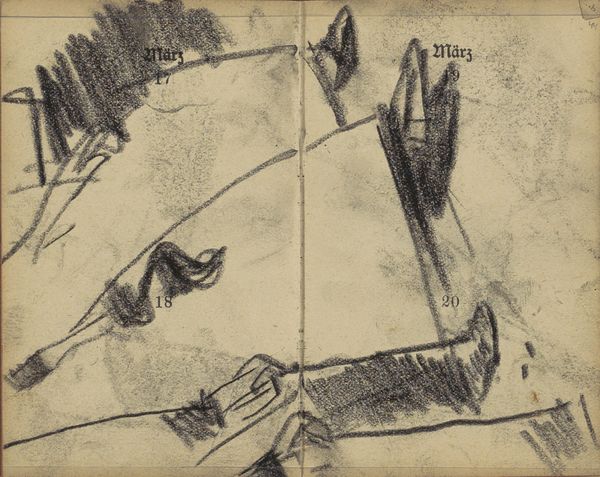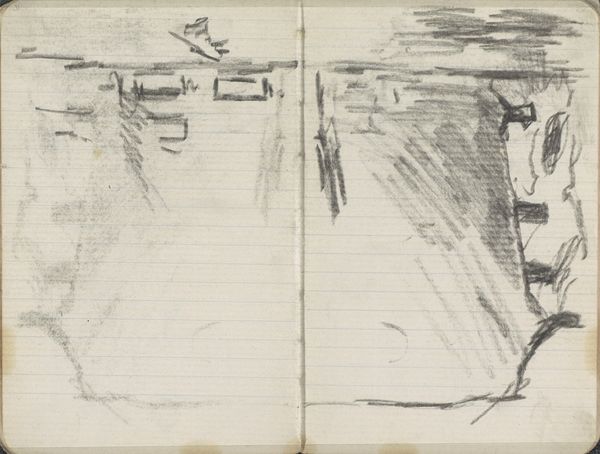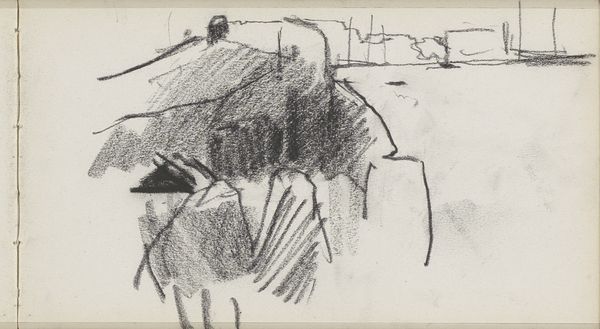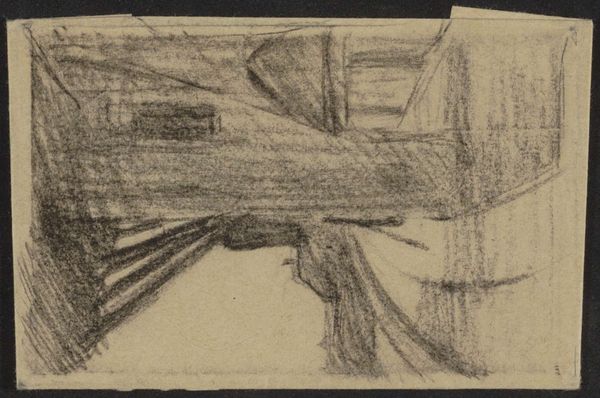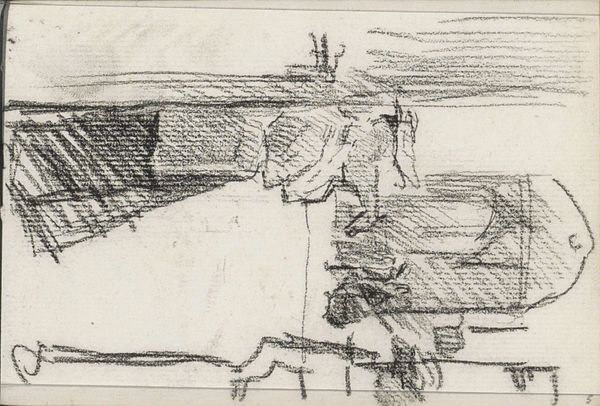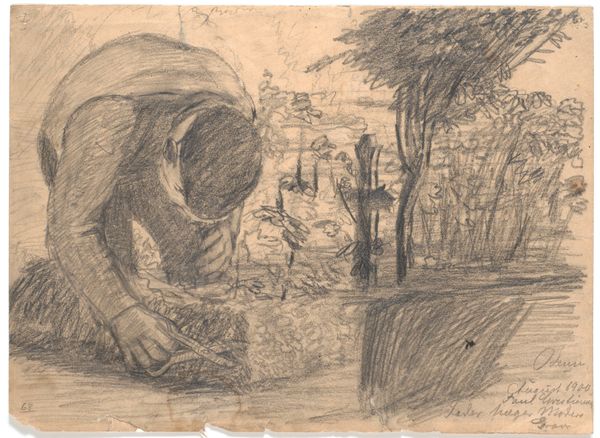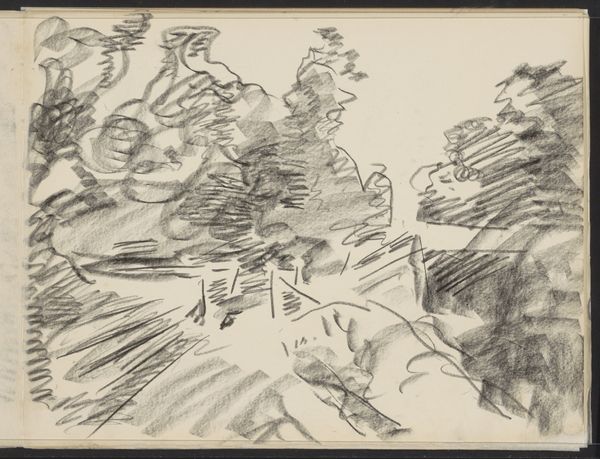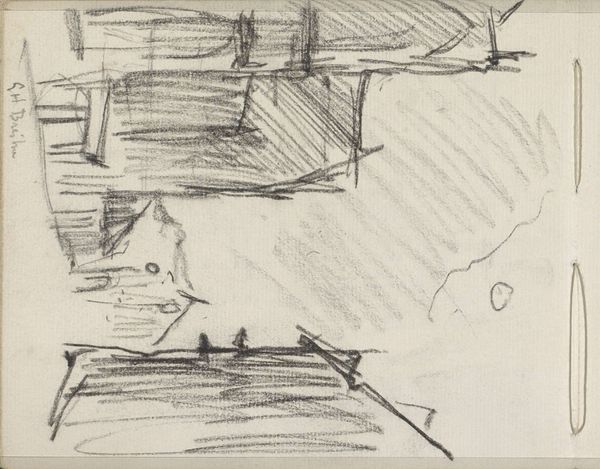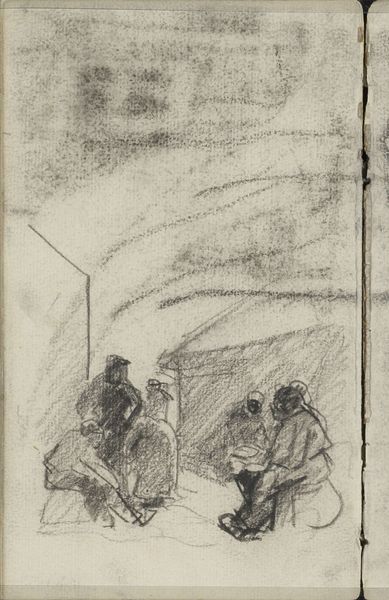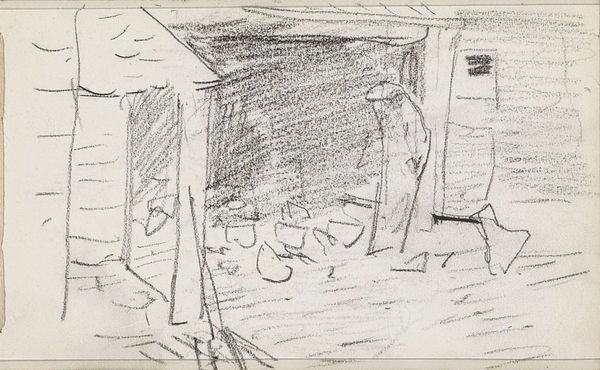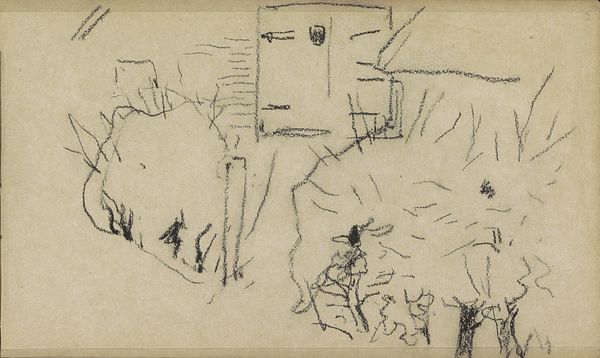![Men Towing a Barge [Study for Boubourouche] by Henri-Gabriel Ibels](/_next/image?url=https%3A%2F%2Fd2w8kbdekdi1gv.cloudfront.net%2FeyJidWNrZXQiOiAiYXJ0ZXJhLWltYWdlcy1idWNrZXQiLCAia2V5IjogImFydHdvcmtzL2Y1MmRlY2JiLWQzZDEtNDNiNC04NGQ2LTNjOGY0MTZjYTViMy9mNTJkZWNiYi1kM2QxLTQzYjQtODRkNi0zYzhmNDE2Y2E1YjNfZnVsbC5qcGciLCAiZWRpdHMiOiB7InJlc2l6ZSI6IHsid2lkdGgiOiAxOTIwLCAiaGVpZ2h0IjogMTkyMCwgImZpdCI6ICJpbnNpZGUifX19&w=3840&q=75)
Dimensions: image: 23.5 × 32 cm (9 1/4 × 12 5/8 in.) (irregular) sheet: 30 × 35 cm (11 13/16 × 13 3/4 in.) (irregular)
Copyright: National Gallery of Art: CC0 1.0
Curator: Henri-Gabriel Ibels' pastel and colored pencil drawing, "Men Towing a Barge, Study for Boubourouche," circa 1892, offers a glimpse into labor along the riverbanks. The composition seems deliberately fragmented, incomplete. Editor: The initial feeling is one of transience—a fleeting moment captured with soft strokes. There's an almost melancholic feel to the scene despite the warm, earthy tones. What really stands out to me is the visible application of pastel. Curator: The visible texture is key. Ibels' process highlights the manual effort, not just in the depicted labor of towing, but also in the artistic act itself. Note the rough strokes used to convey both figures and boat details—there’s an immediacy that contrasts with academic precision. The positioning of figures, boat and river within the paper space generates a unique viewpoint, perhaps an attempt to echo the working conditions of those that depend on its tides. Editor: It’s precisely this rawness, the direct application of material, that I find so compelling. It removes the illusion. What looks like a beautiful if nostalgic image is actually highlighting the labor behind the material world – both literally the heavy task shown but equally the artist's. Look at how those blocks of color and shadow are built, its pure substance. Curator: This connects to the sociopolitical undercurrents. Late 19th century France saw rising social consciousness alongside the artistic avant-garde. Depictions of laboring bodies become charged, inviting us to consider class, power dynamics, and the romanticization—or critique—of rural life. The very act of choosing this subject aligns Ibels with debates around social realism and its place in modern art. Who has access to art? What images can it represent? Editor: Yes! It isn't just about an image of barge workers, its the work of image making and by making it 'visible' forces us to look, truly *look* at what this 'pretty picture' means and involves, how its *made*. The textured pastel surface embodies the materiality and effort inherent not only in river work but artistry. Curator: Exactly, by understanding Ibels’ chosen medium and process, along with that socio-historical understanding, it deepens the resonance of what might, at first glance, seem a simple pastoral scene. Editor: It invites you to reflect, to really notice how so-called 'art' often glosses over the essential relationship between materials, production and class relations. It makes for a deeper appreciation!
Comments
No comments
Be the first to comment and join the conversation on the ultimate creative platform.

